Culture Square
I recently spent a few weeks in China, but unlike most western tourists, I skipped Beijing and Shanghai and went straight to the northeastern city of Changchun, the capital of Jilin Province and the heart of Manchuria (and the current home of a close relative). I later visited other Chinese cities, including Dalian, Shenzhen and a brief stay in Hong Kong. Visiting cities that are typically off the beaten path I felt gave me an interesting insight, especially when comparing the older, northern city of Changchun with the modern, instant city of Shenzhen.
Changchun (长春, or “Long Spring”) is a city that most westerners have not even heard of, yet it has an urban population of over 3 million and a regional population double that of the city proper. It has few well-known tourist attractions, it lies in the flat Manchurian plain, and if not for a very interesting modern history, it would be unremarkable. Changchun, like most cities in the northeast, was controlled by foreign powers in the 20th century, and also by Imperial, Nationalist and Communist Chinese forces. The Russians, who had considerable influence in Manchuria, built a branch of the Trans-Siberian Railway to Port Arthur (Dalian) in 1898 through Changchun, but the Japanese took control of the area after a war with Russia and fully occupied the region in the 1930s until the end of the Second World War.
The city became the capital of the puppet state of Manchukuo(and renamed to Xinjing [新京], or “New Capital”), and installed the last emperor of China, Puyi (an ethnic Manchu), as the nominal head of state. Westerners are likely most familiar with this era of history from the 1987 film The Last Emperor, which was partly set and filmed here. As the capital, the Japanese designed grand boulevards and squares in the “city beautiful” style, and built large administrative buildings and public institutions as well as developed the region’s heavy industry.
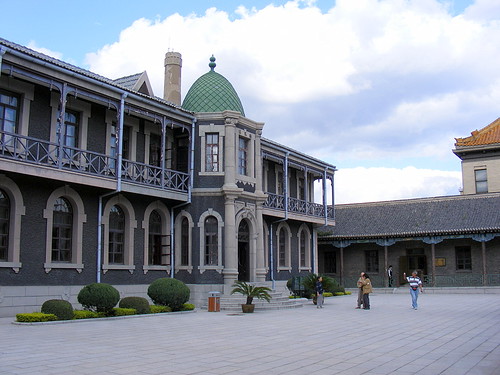
Puppet Emperor’s Palace outer courtyard.
The city could easily be described as the Detroit of China. It is the home of China’s first large automotive manufacturer, appropriately named First Automotive Works, which has a sprawling district of factories, suppliers and worker housing that begged comparison with Ford’s River Rouge complexin Dearborn, Michigan (the plants employ well over 100,000 people). The other principal industries are rail and transit car manufacturing (Changchun Car Company), agricultural implements, as well as government and education (there are several large universities), and a major Mainland Chinese film centre. While Changchun’s auto industry is growing, its sister cities include, somewhat ironically, once-great automotive centres of Windsor, Flint, and Birmingham, England.
Wide boulevard with 5 separate carriageways, with a central “express” roadway, two “collector” roadways on each side, and narrow separated lanes on each side that seems suited to bicycles and mopeds.
In addition, looking at a map of the city or using Google maps, the distinctive “City Beautiful” layout to the main streets is still clearly evident, similar to the Woodward Plan for Detroit, and pre-dates later plans by the People’s Republic for Beijing and elsewhere. Diagonal streets meet at grand traffic circles, and broad avenues radiate from the central city to the edge of town. The most impressive of these public squares is Culture Square, near the city centre and a vibrant, multi-use space, surrounded by Manchukuo-era institutional buildings. On one corner was a large television screen, which at that point, showing the Paralympics, with a large crowd sitting and watching. Elsewhere, people were playing or flying kites, and at the north end were military training drills.

I got a tour of one of the auto plants here in Changchun, a modern factory in a joint venture between FAW and a foreign auto firm. Outside, waiting for the bus back, I saw one of Changchun’s many horse or donkey pulled carts trot past. I would not see nearly as many three-wheel cycles, mopeds, and no animal-pulled carts at all elsewhere on my travels in the country. My sense is that this city, in the interior, has yet to catch up with the Special Economic Zones on the coast and the capital.
Even though this is the less-prosperous northeast, construction cranes abound. Towers are surrounded by bamboo scaffolding and ugly green tarp. Some of the new buildings look impressive from a distance, but are not up close. Ceramic tile, made to look like stone or brick, is the cladding of choice. Nearly all new buildings that I could see were multi-story highrise apartments or mid-rise office or institutional buildings, even here far from Beijing, the older traditional hutong housing is threatened.
Even in front of my host’s apartment, construction is underway, the old hutongs and houses cleared, and excavation started. Next door, there appears to be another phase, where a 1960s-era walk-up apartment building also has the character “chai” (拆), meaning “tear down”. Further up, there is a “nail house” similar to those in Beijing. It was interesting to see this far from the capital in a much lesser-known, smaller city. The walk-up apartment across the street is still partially occupied, but vacant units have been gutted, even the windows removed. While I am not exactly sure why this is done, removing the windows would have the effect of discouraging squatters, as well as encouraging hold-outs to vacate, especially once the cold winter comes. The Google Map for the neighbourhood shows what the area looked like before construction began.
Nail house
Getting around Changchun is interesting. The city has a lengthy single-line light rail system, which is metro-like with manned stations. In the south end, it follows a distinctly suburban boulevard, and this is the only time it has grade crossings with roads, in the inner part, it runs along the main railway, or on elevated viaducts or underground underpasses. I got off about halfway on its route, in front of a Wal-Mart Supercentre and an assortment of literal big boxes. Despite having a somewhat roundabout route and having higher fares than the buses, it does attract a respectable ridership. The LRT cars are Bombardier Talents, built built locally as well under a joint venture.
Changchun LRT
There is also one legacy streetcar as well, though it runs in a treed ROW on the side of the street. Getting around means buses though, which have cameras and automated announcements, but seat only 25-30, are short, and are a bit rickety and have manual transmissions. All the routes are numbered and seem to run frequently though, but stop early, either at 8:00 or 9:30 in the evening. Some buses, despite being small, have a conductor (who also operates the door) as well as a driver.
The #54 streetcar is a legacy route (and one of three remaining legacy trams in China — later I rode parts of the other two in Dalian and Hong Kong), the final surviving tram from a system that the Japanese occupiers first developed. It’s hard to tell how old the cars are, but inside, the seating is all inwards-facing benches, like New York subways, with a driver on one end and a conductor on the other end, both collecting fares. Exit is through the middle doors. The #54 is somewhat faster than the buses, because even though it hits all the traffic lights like everyone else, being on the side of the road in a nice treed ROW, it has less stops and loads faster. This seems more like how Toronto’s Transit City will function.
The buses and the #54 are all 1 yuen each (about 12 cents) but no transfers. The buses and streetcar also accept RFID cards as well, which is a new technology on such small, manual transmission buses. But all buses have auto announcements (the ones in the light rail are delightfully bilingual “Hello passengers, the next stop is ____”). All bus stops have numbers, destinations, and time of first and last bus: apparently the buses are frequent at all service hours, which are short. It’s strange transport – different from the fly-by-the-seat-of-your-pants mini-buses I experienced in Merida and Mexico City, which feel much more like true third world transit, and also different from transit in North America.
Later, I visited Dalian, a similar-sized city on the Manchurian coast near the Korean Peninsula, and later stayed with another host in the instant boom city of Shenzhen, next door to Hong Kong. One of the best parts of my trip was comparing cities in different parts of the country, and I plan to post more entries over the next few days.

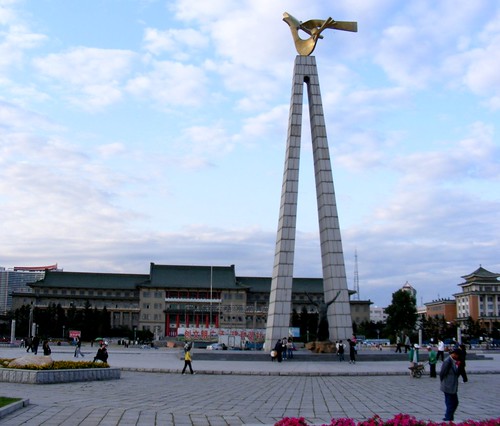

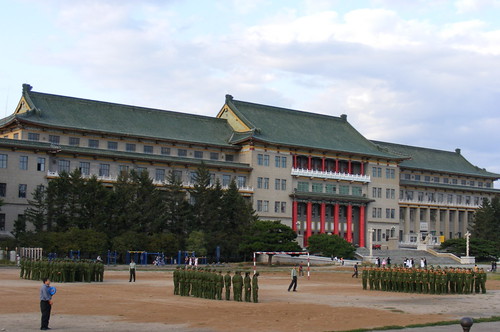







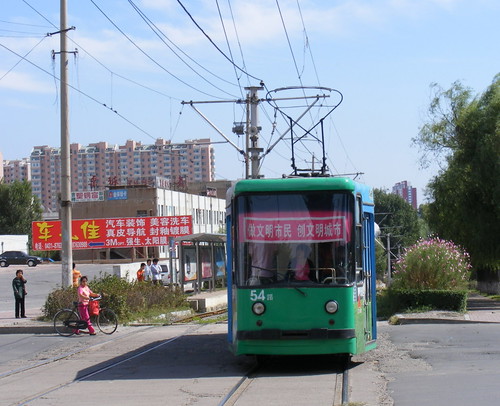

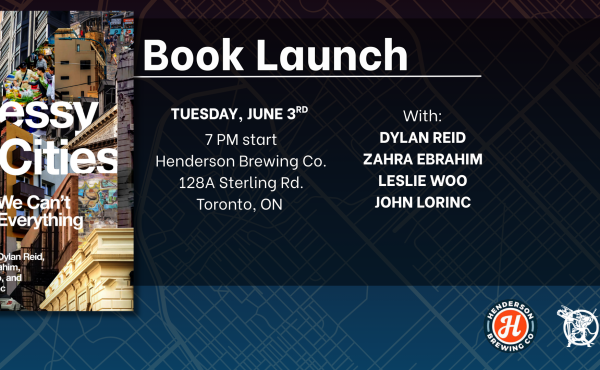
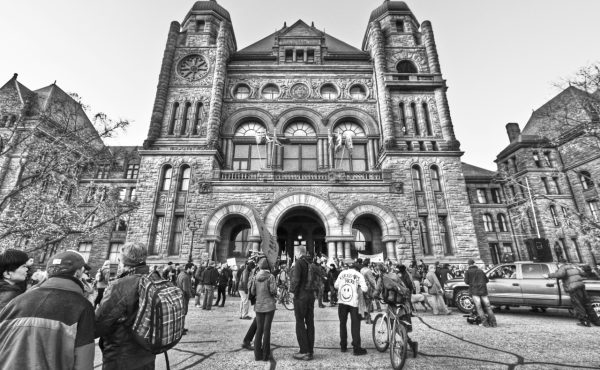
2 comments
Very interesting. So here in T.O. we’re going with WW2-era, streetcar-ish LRT:
“….the final surviving tram from a system that the Japanese occupiers first developed.” “The #54 is somewhat faster than the buses, because even though it hits all the traffic lights like everyone else, being on the side of the road in a nice treed ROW, it has less stops and loads faster. This seems more like how Toronto’s Transit City will function.”
Rather than subway-like, grade-separated LRT:
“The city has a lengthy single-line light rail system, which is metro-like with manned stations. In the south end, it follows a distinctly suburban boulevard, and this is the only time it has grade crossings with roads, in the inner part, it runs along the main railway, or on elevated viaducts or underground underpasses.”
Boston’s T, especially the Green Line, is a combination of Changchun’s LRT and streetcar. For example, E (Heath) is at grade and runs down the center of Huntington Avenue while the D (Riverside), above ground, runs in a separated rail bed.